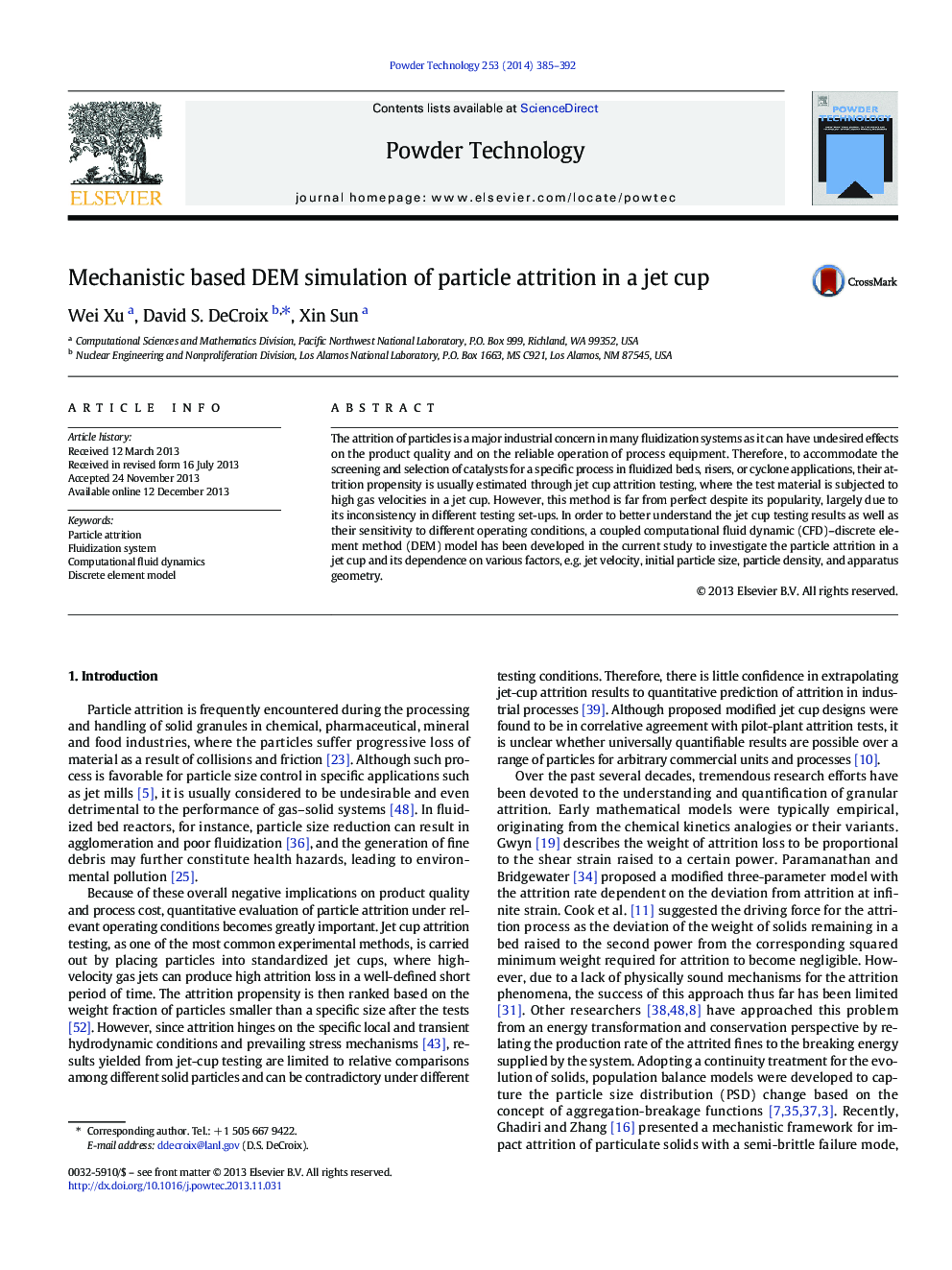| کد مقاله | کد نشریه | سال انتشار | مقاله انگلیسی | نسخه تمام متن |
|---|---|---|---|---|
| 236474 | 465672 | 2014 | 8 صفحه PDF | دانلود رایگان |

• A mechanistic based particle attrition model was developed.
• Two attrition mechanisms are considered, impact breakage and abrasive wear.
• The attrition rate is strongly affected by air velocity.
• The dependence of attrition on particle size is found to be quite nonlinear.
• Particle density is another crucial metric to the catalyst attrition.
The attrition of particles is a major industrial concern in many fluidization systems as it can have undesired effects on the product quality and on the reliable operation of process equipment. Therefore, to accommodate the screening and selection of catalysts for a specific process in fluidized beds, risers, or cyclone applications, their attrition propensity is usually estimated through jet cup attrition testing, where the test material is subjected to high gas velocities in a jet cup. However, this method is far from perfect despite its popularity, largely due to its inconsistency in different testing set-ups. In order to better understand the jet cup testing results as well as their sensitivity to different operating conditions, a coupled computational fluid dynamic (CFD)–discrete element method (DEM) model has been developed in the current study to investigate the particle attrition in a jet cup and its dependence on various factors, e.g. jet velocity, initial particle size, particle density, and apparatus geometry.
Figure optionsDownload as PowerPoint slide
Journal: Powder Technology - Volume 253, February 2014, Pages 385–392